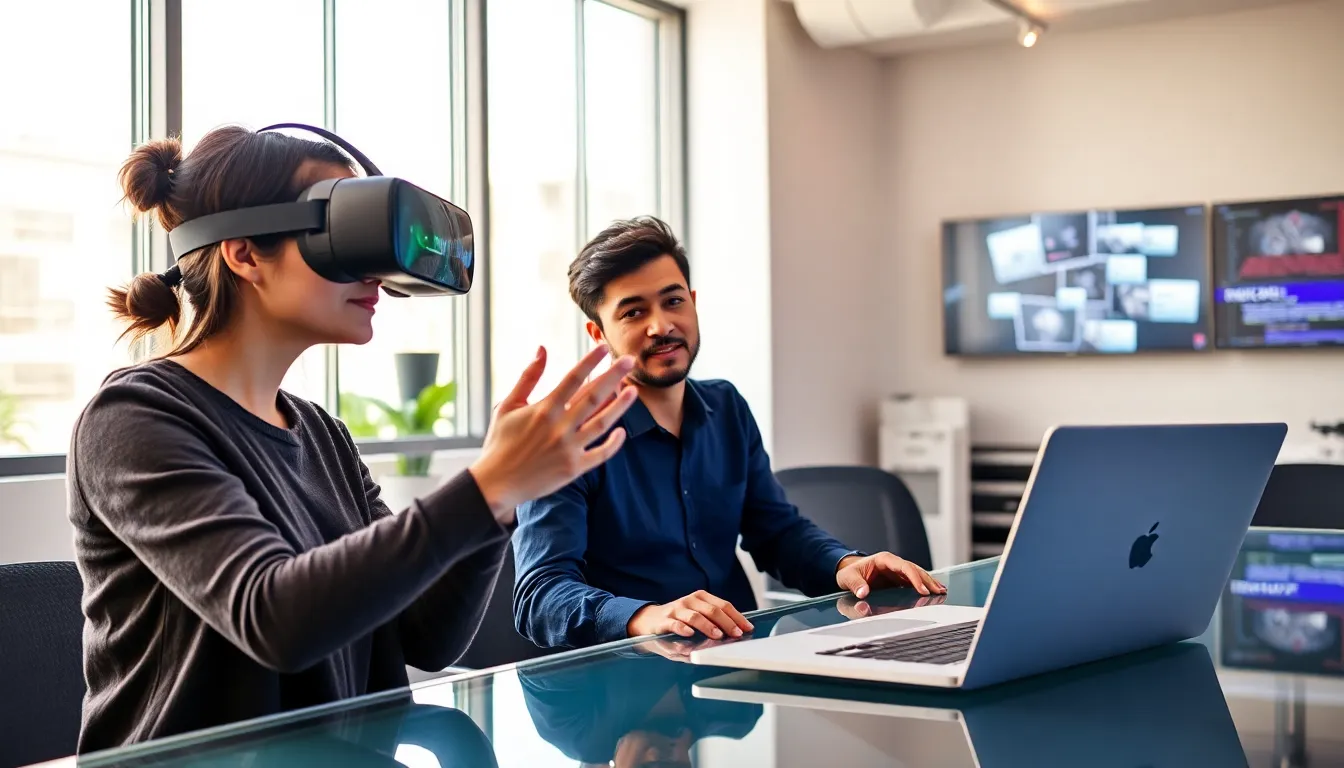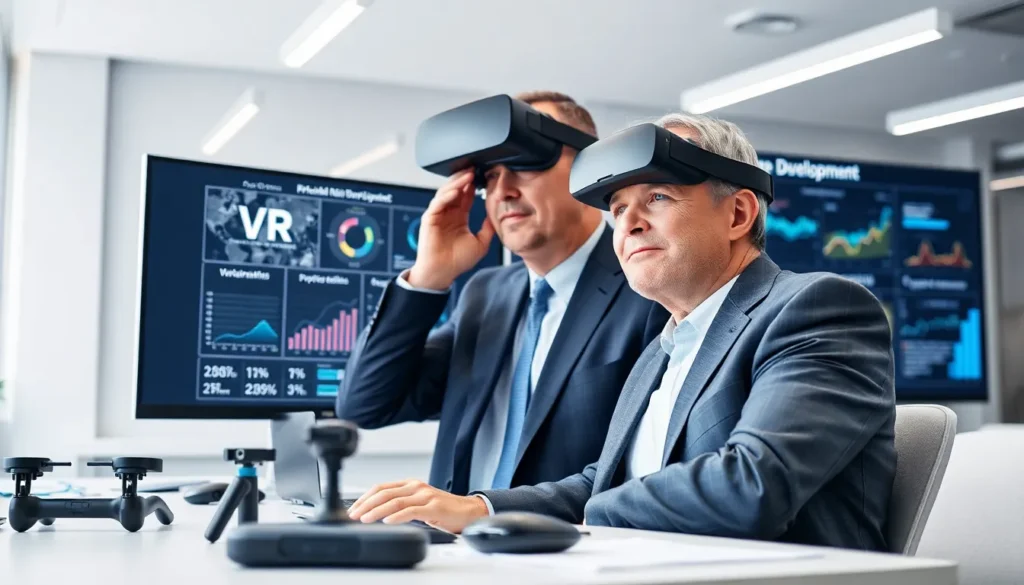Table of Contents
ToggleVirtual reality development has skyrocketed in recent years, transforming how we interact with the digital world. But wait, what’s the deal with VR? It’s like stepping into a sci-fi movie where the mundane instantly morphs into the extraordinary. Ready to jump into this captivating realm, where the only limit is one’s imagination? Buckle up, because this journey through virtual reality is packed with insights, applications, and future trends that promise to reshape our experiences like never before.
Understanding Virtual Reality

What Is Virtual Reality?
Virtual reality (VR) is a computer-generated simulation that allows users to immerse themselves in a three-dimensional environment. When users equip themselves with VR headsets, they don’t just see a screen, they feel a presence in a virtual space, making interactions with digital realms feel all the more real. From thrilling games to serene landscapes, VR can transport users thousands of miles away, all from their living rooms.
Key Components of Virtual Reality
Several key components make up the VR experience. Headsets are at the forefront, providing the visual immersion needed to engage users fully. These devices often include motion sensors to track head movements, allowing for a more interactive experience. Controllers are essential too: they help interaction with elements in the virtual world. Also, audio plays a significant role. Spatial audio technologies enhance the realism by ensuring sound appears to come from specific locations within the virtual environment.
Applications of Virtual Reality
Gaming and Entertainment
One of the most popular applications of virtual reality is in gaming and entertainment. VR games create immersive experiences that allow players to step into their favorite worlds. Whether it’s battling dragons, solving mysteries, or exploring unknown territories, the thrill of VR gaming keeps players coming back for more. Multiplayer experiences also offer the social interaction that many crave in today’s digital landscape.
Education and Training
Education has also found an ally in virtual reality. Imagine learning about biology not through books but by exploring a digital version of the human body from the inside. Schools and universities use VR in classrooms to create interactive learning experiences. Training simulations for professions like aviation or surgery allow individuals to practice skills in a safe environment that mimics real-life scenarios, greatly enhancing their preparedness.
Healthcare Innovations
The healthcare sector is witnessing groundbreaking innovations thanks to virtual reality. Surgeons can rehearse complex operations through simulated conditions, significantly reducing errors during actual procedures. Besides, VR therapy is emerging as an effective way to help patients confront phobias, PTSD, and anxiety disorders, making recovery journeys feel less daunting.
Technical Aspects of VR Development
VR Hardware Requirements
Establishing a robust virtual reality experience relies heavily on hardware that meets specific requirements. For standout VR development, powerful graphics processing units (GPUs) are essential. These systems need to run high-resolution graphics to ensure fluid motion and minimize lag, preventing motion sickness. High-quality headphones and motion sensors enhance user experience, creating a seamless interactive environment.
Software Development Tools and Platforms
Developers have access to a myriad of software tools tailored for VR development. Popular platforms like Unity and Unreal Engine provide users with the resources needed to create stunning environments and interactive elements. These tools include built-in functionalities, like physics engines and rendering capabilities, enabling designers to produce more believable simulations without starting from scratch.
Creating Immersive Experiences
Creating an immersive experience isn’t solely about visuals. Developers think about interaction, storytelling, and user engagement. Integrating haptic feedback technology offers users tactile sensations, deepening their sense of presence in virtual settings. Storytelling plays a crucial role too, as a compelling narrative keeps users invested in their experiences.
Challenges in Virtual Reality Development
Technical and Design Challenges
Even though the wonders of VR, development isn’t without hurdles. Technical challenges, such as optimizing graphics for different hardware, can be daunting. Developers must ensure that experiences run smoothly across various devices while maintaining high-quality visuals. Design challenges also surface: creating user interfaces that function intuitively in 3D environments is complex. Designers must contemplate how users will interact naturally within a virtual space.
User Experience Considerations
User experience is paramount in virtual reality development. Fatigue and discomfort can arise from prolonged usage, prompting developers to design engaging experiences that don’t overwhelm users. Also, accommodating a diverse audience requires versatile design strategies ensuring that everyone, regardless of experience, can navigate and enjoy VR.
Future Trends in Virtual Reality
Advancements in Hardware and Software
The future of virtual reality is brimming with potential. Advancements in hardware promise to deliver lightweight, wireless headsets with even more powerful capabilities. Developers can expect improved visuals that blur the line between reality and the digital world. Software side improvements will likely help the integration of artificial intelligence, making user experiences more personalized and responsive.
New Use Cases and Markets
New use cases for virtual reality seem to emerge daily. Industries such as tourism and real estate are beginning to use VR for virtual tours, enhancing their marketing strategies. As costs decrease and accessibility improves, expect VR technology to penetrate everyday activities, from grocery shopping to social networking.







